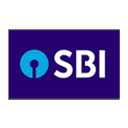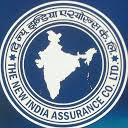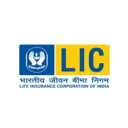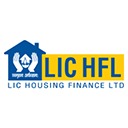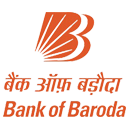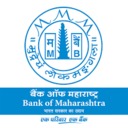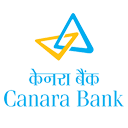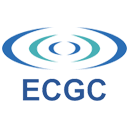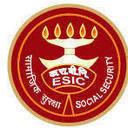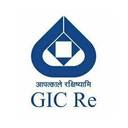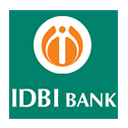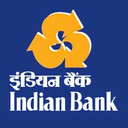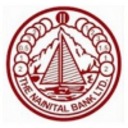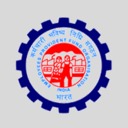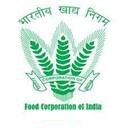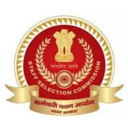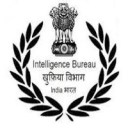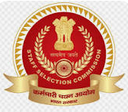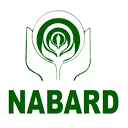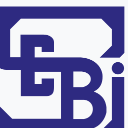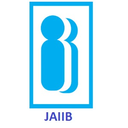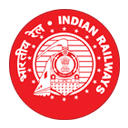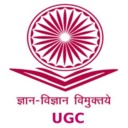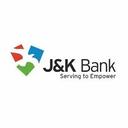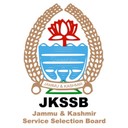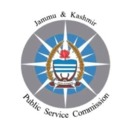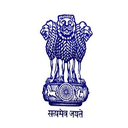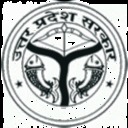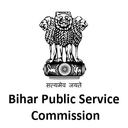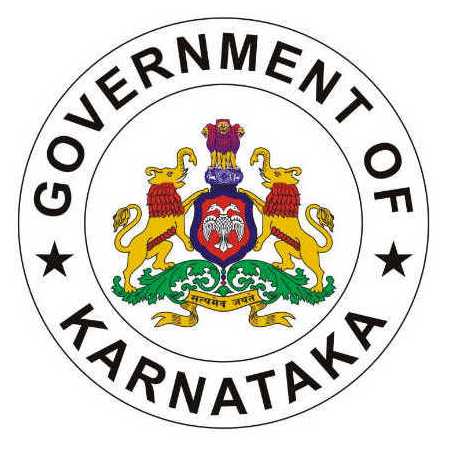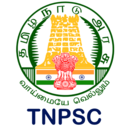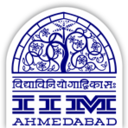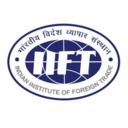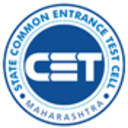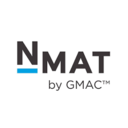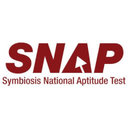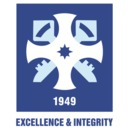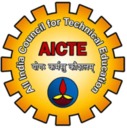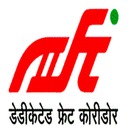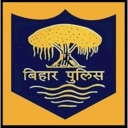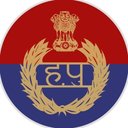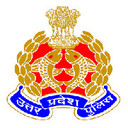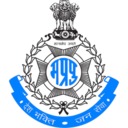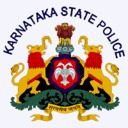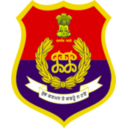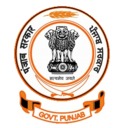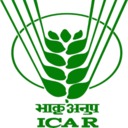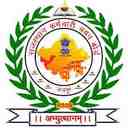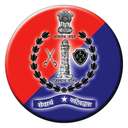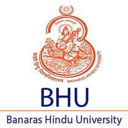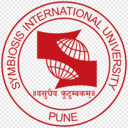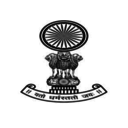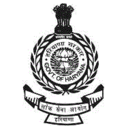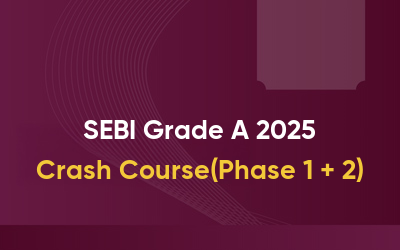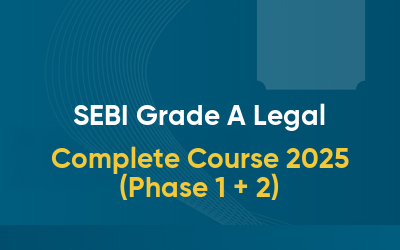The SEBI Grade A Notification 2025 has been released along with the online application form. Candidates can apply online until 28th November 2025. This year, there have been some important changes in the SEBI Grade A Phase 2 Paper 2 exam pattern. Earlier, the IT paper included a 210-minute coding test, but from this year onwards, it will consist of multiple-choice questions (MCQs) based on the IT stream, with a total duration of 180 minutes.
In addition, the Phase 2 Paper 2 syllabus for the Legal stream has also been updated topics related to the Companies Act are now clearly specified in the SEBI Grade A Syllabus 2025.
The SEBI Grade A Paper 2 syllabus varies for different streams, including General, Legal, Information Technology (IT), Engineering (Electrical and Civil), Research, and Official Language. This article provides a detailed, topic-wise syllabus for each of these disciplines.
SEBI Grade A Syllabus 2025
The SEBI Grade A Syllabus 2025 covers a wide range of topics designed to test candidates' analytical ability, domain knowledge, and general awareness. It includes subjects like Quantitative Aptitude, Reasoning, English Language, and General Awareness in Phase I, along with stream-specific papers in Phase II for disciplines such as General, Legal, IT, Research, and Engineering. Candidates are also tested on Finance, Management, Economics, Accountancy, and Companies Act concepts. A clear understanding of the syllabus helps in creating an effective preparation strategy for the exam.
SEBI Grade A Exam Pattern 2025
The SEBI Grade A Exam Pattern has three stages: Phase 1 (Prelims) with two objective papers for screening, Phase 2 (Mains) with one descriptive and one objective paper, and an Interview. Marks from Phase 2 and the Interview (85:15 ratio) are used for final selection, while Phase 1 is only qualifying. Negative marking applies in all objective papers.
| Stage | Paper | Subjects/Focus | Type | Marks | Time |
|---|
| Phase 1 (Prelims) | Paper 1 | General Awareness, English, Quantitative Aptitude, Reasoning | Objective | 100 | 60 min |
| Paper 2 | Stream-specific topics | Objective | 100 | 60 min |
| Phase 2 (Mains) | Paper 1 | Descriptive English | Descriptive | 100 | 60 min |
| Paper 2 | Stream-specific topics | Objective | 100 | 60 min |
| Interview | – | – | – | 100 | – |
Check out SEBI Grade A Exam Date
SEBI Grade A Phase 1 Syllabus
SEBI Grade A Phase 1 includes Paper 1 which tests general aptitude, while Paper 2 covers stream-specific subjects, both of them are objective papers. We have listed the topics covered under each subjects.
SEBI Grade A Phase 1 Paper 1 Syllabus
The SEBI Grade A Phase 1 Paper 1 syllabus includes four key sections: General Awareness, English Language, Quantitative Aptitude, and Reasoning Ability. The topic wise detailed syllabus for each subject is given below.
SEBI Grade A General Awareness
This section under SEBI Grade A Syllabus includes both static and current topics to test a candidate's overall awareness of national and international developments.
| Topics Covered |
|---|
| Current Events (National & International) |
| Financial and Economic News |
| Budget and Economic Survey |
| Important Government Schemes |
| Reports and Indices |
| Books and Authors |
| Important Days and Events |
| Sports News |
| Science and Technology Developments |
SEBI Grade A English Language
This section under SEBI Grade A Syllabus checks a candidate's understanding of English grammar, vocabulary, and comprehension.
SEBI Grade A Quantitative Aptitude
The questions are designed to assess numerical ability and problem-solving skills.
Apply Online for SEBI Grade A Exam
SEBI Grade A Reasoning Ability
This section under SEBI Grade A Syllabus tests logical and analytical reasoning skills.
Attempt SEBI Grade A Mock Test
SEBI Grade A Phase 1 Paper 2 Syllabus
The SEBI Grade A Phase 1 Paper 2 syllabus varies for each stream, the details of the Syllabus are as follows:
General Stream
The topic-wise detailed syllabus for Phase 1 Paper 2 (General stream) is as follows:
| Section | Topics Covered |
|---|
| A. Commerce & Accountancy | a) Accounting as a financial information system
b) Accounting Standards — Depreciation, Inventories, Revenue Recognition, Fixed Assets, Foreign Exchange Transactions, Investments
c) Cash Flow & Fund Flow Statements, Financial Statement Analysis, Ratio Analysis
d) Accounting for Share Capital Transactions (Bonus & Right Shares)
e) Employees Stock Option Plans (ESOPs) & Buy-back of Securities
f) Preparation & Presentation of Company Final Accounts |
| B. Management | a) Nature & Scope of Management; Planning, Organizing, Staffing, Directing & Controlling
b) Role of Manager; Leadership – Tasks, Styles & Theories
c) HRD – Concept & Goals
d) Motivation, Morale & Incentives – Theories & Applications
e) Communication – Process, Channels, Types, Barriers, Role of IT |
| C. Finance | 1. Financial System – Role & Functions of Regulatory Bodies
2. Financial Markets – Primary & Secondary Markets (Forex, Money, Bond, Equity), Instruments & Recent Developments
3. General Topics: Derivatives (Forwards, Futures, Swaps), Recent Financial Developments, Financial Inclusion via Technology, Alternate Finance Sources (PPP), Direct & Indirect Taxes, GST, FRBM, Finance Commission, Fiscal Policy, Inflation (WPI, CPI, Control Measures) |
| D. Costing | 1. Cost & Management Accounting – Objectives, Scope
2. Methods – Job, Batch, Process, Contract, Service Costing
3. Cost Control & Analysis – Standard Costing, Marginal Costing, Budget & Budgetary Control
4. Lean Systems & Innovation – JIT, Kaizen, 5S, TPM, Six Sigma, BPR |
| E. Companies Act | Companies Act, 2013 – Chapter III, IV, VIII, X, XI, XII, XXVII |
| F. Economics | Demand & Supply, Market Structures, National Income, Keynesian & Classical Theories, Consumption & Investment Functions, IS-LM Model, Business Cycles, Inflation, BOP, Forex Markets, Fiscal & Monetary Policy, NBFCs |
Legal Stream
The topic-wise detailed syllabus for Phase 1 Paper 2 (Legal stream) is as follows:
| Subject | Details | Weightage (Indicative) |
|---|
| Constitution of India | Preamble, Parts I, III, IV, IVA, V, VI, VIII, IXA, IXB, XI | 20% |
| Contract Law | Indian Contract Act (1872), Sale of Goods Act (1930), Indian Partnership Act (1932), Specific Relief Act (1963) | 25% |
| Civil Procedure | Code of Civil Procedure, 1908 (Parts I–V, VII & Schedule I) | 25% |
| Property & Allied Laws | Transfer of Property Act (Ch. III–V), Arbitration & Conciliation Act (Part I), Limitation Act (1963) | — |
| Administrative Law | Concepts, Principles, and Applications | 20% |
| Jurisprudence & Interpretation | Legal Theory, Latin Maxims, Statutory Interpretation | — |
| Law of Torts & Consumer Protection | Torts and Consumer Protection Act, 2019 | 10% |
Information Technology Stream
The topic-wise detailed syllabus for Phase 1 Paper 2 (IT stream) is as follows:
| Topic | Details | Weightage |
|---|
| Database Concepts | ER Model, Relational Algebra, Normal Forms, File Organization, Indexing (B/B+ Trees), Concurrency Control | 10 |
| SQL Queries | Select, View, Update, Delete, Joins, Aggregate Functions, Nested Queries | 10 |
| Programming (C/C++/Java) | Iteration, Recursion, Functions, OOP Concepts, Exception Handling | 30 |
| Data Analytics (Python/R) | Regex, DataFrames, File Management, Data Mining, Charts, Graphs | 10 |
| Algorithms | Trees, Graphs, Sorting, Searching, Greedy, DP, Divide & Conquer | 10 |
| Networking | OSI Model, TCP/IP, LAN, Switches, Routers, Firewalls, Protocols | 10 |
| Information & Cyber Security | CIA Triad, Cyber Attacks, Network/Software Security, Audits | 10 |
| Data Warehousing | ETL, Metadata, Data Cube, Data Mart | 5 |
| Shell Programming | Shell Scripting, Loops, Arguments, UNIX Commands | 5 |
Research Stream
The topic-wise detailed syllabus for Phase 1 Paper 2 (Research stream) is as follows:
| Subject | Topics |
|---|
| Economics | Demand & Supply, Market Structures, National Income, IS-LM, Business Cycles, Inflation, Fiscal & Monetary Policy |
| Public Economics | Public Goods, Taxation (Direct/Indirect), Expenditure, Debt, Budget, Multiplier |
| Statistics & Econometrics | Mean, Variance, Sampling, Hypothesis Testing, Regression |
| International Economics | BOP, Forex Markets, Role of BIS, IOSCO, IMF, World Bank |
| Financial Markets | Market Models, Efficiency, Primary/Secondary/Commodity Markets, Mutual Funds, Derivatives, Hedging, Arbitrage |
Engineering (Electrical) Stream
The topic-wise detailed syllabus for Phase 1 Paper 2 (Engineering Electrical Stream) is as follows:
| Subject / Topic | Detailed Syllabus |
|---|
| Electrical Materials | - Electrical Engineering Materials - Crystal structures and defects - Ceramic and insulating materials - Magnetic materials – basics, properties, and applications - Ferrites and ferromagnetic materials and components - Basics of solid-state physics, conductors, and photoconductivity - Basics of nanomaterials and superconductors |
| Electric Circuits and Fields | - Circuit elements, network graph, KCL, KVL, Node and Mesh analysis - Ideal current and voltage sources - Thevenin's, Norton's, Superposition, and Maximum Power Transfer theorems - Transient response of DC and AC networks - Sinusoidal steady-state analysis, filter concepts, two-port networks, three-phase circuits - Magnetically coupled circuits - Gauss Theorem, electric field and potential (point, line, plane, spherical charge distributions) - Ampere's and Biot-Savart's laws; inductance, dielectrics, capacitance, Maxwell's equations |
| Electrical & Electronic Measurements | - Measurement principles, accuracy, precision, standards - Bridges and potentiometers - Moving coil, moving iron, dynamometer, and induction type instruments - Measurement of voltage, current, power, energy, power factor - Instrument transformers, digital voltmeters, and multimeters - Phase, time, and frequency measurement- Q-meters, oscilloscopes, potentiometric recorders - Error analysis, basics of sensors, transducers, and data acquisition systems |
| Computer Fundamentals | - Number systems, Boolean algebra, arithmetic functions - Computer architecture: CPU, I/O, and memory organization - Peripheral devices, data representation, and programming basics - Operating systems and networking basics- Virtual memory, file systems - Elements of programming languages with examples |
| Basic Electronics Engineering | - Semiconductor diodes and transistors – basics and characteristics - Junction and field-effect transistors (BJT, FET, MOSFET) - Transistor amplifiers, equivalent circuits, frequency response - Oscillators, feedback amplifiers, and other related circuits |
| Analog & Digital Electronics | - Operational amplifiers – characteristics and applications - Combinational and sequential logic circuits, multiplexers, multivibrators - Sample and hold circuits, A/D and D/A converters - Basic and active filter circuits and applications - Microprocessor basics – interfaces and applications - Linear integrated circuits - Analog communication – modulation, demodulation, noise, bandwidth, transmitters, receivers, SNR - Digital communication – sampling, quantizing, coding, FDM, TDM, PLCC systems |
| Systems & Signal Processing | - Continuous and discrete-time signals: representation, shifting, scaling - Linear, time-invariant, and causal systems - Fourier series of continuous periodic signals - Sampling theorem, Fourier, Laplace, and Z-transforms - Discrete Fourier Transform (DFT), FFT - Linear convolution, discrete cosine transform (DCT) - FIR and IIR filters, bilinear transformation |
| Control Systems | - Feedback principles, transfer function, block diagrams, signal flow graphs - Steady-state errors, Routh-Hurwitz criterion, Nyquist technique, Bode plots, root loci - Lag, lead, and lead-lag compensation - Stability, transient, and frequency response analysis - State-space model, state transition matrix, controllability, observability - Linear state-variable feedback, PID and industrial controllers |
| Electrical Machines | - Single-phase and three-phase transformers – connections, parallel operation, auto-transformer - Energy conversion principles - DC machines – types, windings, generator characteristics, armature reaction, commutation, starting, and speed control - Induction motors – principles, types, performance, starting, and speed control - Synchronous machines – performance, regulation, parallel operation, motor starting, characteristics, applications - Servo and stepper motors |
| Power Systems | - Power generation – steam, gas, and water turbines - Transmission line models, performance, cables, insulation, corona, and radio interference - Power factor correction, symmetrical components, fault analysis - Protection systems, solid-state relays, digital protection - Circuit breakers, radial and ring-main distribution systems - Load flow, voltage control, economic operation, system stability, swing curves, equal area criterion - HVDC transmission, FACTS, power system dynamics - Distributed generation (solar, wind), smart grid concepts, environmental implications, power economics |
| Power Electronics & Drives | - Semiconductor power devices – diodes, transistors, thyristors, triacs, GTOs, MOSFETs, IGBTs (operation and characteristics) - Triggering circuits, phase-controlled rectifiers, bridge converters (half/full-controlled) - Principles of choppers and inverters - Adjustable speed DC and AC drives- DC–DC and DC–AC switched-mode converters - Resonant converters, high-frequency inductors and transformers - Power supplies |
Engineering Civil Stream
The topic-wise detailed syllabus for Phase 1 Paper 2 (Engineering Civil Stream) is as follows:
| Subject / Topic | Detailed Syllabus |
|---|
| Building Materials | - Stone, Lime, Glass, Plastics, Steel, FRP, Ceramics, Aluminium, Fly Ash, Timber, Bricks, Aggregates, and Admixtures – classification, properties, and selection criteria. - Cement – types, composition, properties, uses, specifications, and tests. - Lime and cement mortars, concrete – properties and testing methods. - Design of concrete mixes – proportioning of aggregates and mix design methods. |
| Solid Mechanics | - Elastic constants, stress and strain (plane stress and plane strain). - Mohr's circle of stress and strain. - Elastic theories of failure, principal stresses. - Concepts of bending, shear, and torsion. |
| Structural Analysis | - Basics of strength of materials, stresses and strains. - Bending moments, shear forces, bending and shear stresses. - Analysis of determinate and indeterminate structures – trusses, beams, and frames. - Rolling loads, influence lines, unit load method. - Free and forced vibrations (single and multi-degree systems). - Suspended cables and computer-aided design concepts. |
| Design of Steel Structures | - Working stress method principles. - Design of tension and compression members. - Design of beams, beam-column connections, built-up sections, girders, and industrial roofs. - Principles of ultimate load design. |
| Design of Concrete and Masonry Structures | - Limit state design for bending, shear, axial compression, and combined forces. - Design of beams, slabs, lintels, foundations, retaining walls, tanks, staircases. - Pre-stressed concrete design – materials and methods. - Earthquake-resistant design principles.- Design of masonry structures. |
| Construction Practice, Planning & Management | - Construction planning, equipment, site investigation, and management. - Estimation, analysis of rates, and project management tools (e.g., CPM, PERT). - Tendering process and contract management. - Quality control, productivity, operational cost, and land acquisition. - Labour safety and welfare measures. |
| Flow of Fluids, Hydraulic Machines & Hydro Power | (a) Fluid Mechanics, Open Channel & Pipe Flow: Fluid properties, dimensional analysis, flow kinematics, viscosity, boundary layer, drag, lift, open channel flow principles, hydraulic jump, surges, and pipe networks.(b) Hydraulic Machines & Hydro Power: Pumps, air vessels, turbines (types, classification, performance), power house classification and layout, storage and pondage, control of supply. |
| Hydrology & Water Resources Engineering | - Hydrological cycle, groundwater and well hydrology, stream gauging, river morphology. - Floods, droughts, reservoir capacity, and management. - Water resources and irrigation systems, river basins and potential, water demand assessment. - Water logging, canal and drainage design, gravity dams, weirs, barrages, energy dissipaters. - Cross drainage and headworks design, canal construction and maintenance. - River training works and rainfall measurement and analysis. |
| Environmental Engineering | (a) Water Supply Engineering: Water sources, estimation, quality standards, testing, and treatment.- Rural, institutional, and industrial water supply systems.- Pollutants and their effects, water demand estimation, and distribution network design. (b) Waste Water Engineering: Planning and design of sewage collection, treatment, and disposal systems.- Sludge management, reuse of treated effluents, industrial waste water and ETPs. (c) Solid Waste Management: Classification, planning, design, disposal systems, beneficial uses. (d) Air, Noise Pollution & Ecology: Concepts, sources, and control methods. |
| Geo-technical & Foundation Engineering | (a) Geo-technical Engineering: Soil exploration – planning and methods, soil properties and classification, tests and correlations, permeability, seepage, compressibility, consolidation, shear strength, earth pressure theories, stress distribution, geo-synthetics. (b) Foundation Engineering: Types and selection of foundations, bearing capacity, settlement, shallow and deep foundation design, testing, slope stability, embankments, dams, earth retaining structures, and ground improvement techniques. |
| Surveying & Geology | (a) Surveying: Types and methods, instruments, measurement of distance, elevation, direction, field astronomy, GPS, mapping, photogrammetry, remote sensing, layout for culverts, canals, bridges, roads, railways, buildings, and curve setting. (b) Geology: Basics of engineering geology and its applications in civil projects. |
| Transportation Engineering | (a) Highways: Planning, construction methodology, alignment, geometric design, traffic surveys, traffic control, flexible and rigid pavement design principles. (b) Tunneling: Alignment, construction methods, muck disposal, drainage, lighting, and ventilation. (c) Railways: Terminology, planning, design, maintenance, and modernization. (d) Harbours & Airports: Terminology, layout, and design of harbours and airports. |
Official Language Stream
The topic-wise detailed syllabus for Phase 1 Paper 2 (Official Language stream) is as follows:
| Topic | Details |
|---|
| Official Language Policy | Govt. of India's Hindi Policy |
| Translation | Hindi ↔ English (Words, Phrases, Sentences) |
| Legal Terminology | Hindi ↔ English (Legal Terms) |
| Administrative/Banking/Capital Market Terms | Hindi ↔ English (Specialized Vocabulary) |
SEBI Grade A Phase 2 Syllabus
Phase 2 of SEBI Grade A Syllabus is the main examination stage and comprises two papers as well:
SEBI Grade A English Writing Skills (Paper 1 Common for All Streams)
This Paper 1 is a descriptive paper which is common for all streams, aimed at testing a candidate's writing and comprehension ability.
| Section | Marks | Duration |
|---|
| Essay Writing | 30 | |
| Precis Writing | 30 | |
| Reading Comprehension | 40 | |
| Total | 100 | 60 minutes |
- Minimum Qualifying Marks: 30%
- The paper is descriptive and must be typed on a computer.
SEBI Grade A Phase 2 Paper 2 Syllabus
This Paper 2 is similar in structure to Phase 1 Paper 2 but includes more analytical and in-depth questions.
General Stream
| Section | Topics Covered |
|---|
| A. Commerce & Accountancy | a) Accounting as a financial information system
b) Accounting Standards — Depreciation, Inventories, Revenue Recognition, Fixed Assets, Foreign Exchange Transactions, Investments
c) Cash Flow & Fund Flow Statements, Financial Statement Analysis, Ratio Analysis
d) Accounting for Share Capital Transactions (Bonus & Right Shares)
e) Employees Stock Option Plans (ESOPs) & Buy-back of Securities
f) Preparation & Presentation of Company Final Accounts |
| B. Management | a) Nature & Scope of Management; Planning, Organizing, Staffing, Directing & Controlling
b) Role of Manager; Leadership – Tasks, Styles & Theories
c) HRD – Concept & Goals
d) Motivation, Morale & Incentives – Theories & Applications
e) Communication – Process, Channels, Types, Barriers, Role of IT |
| C. Finance | 1. Financial System – Role & Functions of Regulatory Bodies
2. Financial Markets – Primary & Secondary Markets (Forex, Money, Bond, Equity), Instruments & Recent Developments
3. General Topics: Derivatives (Forwards, Futures, Swaps), Recent Financial Developments, Financial Inclusion via Technology, Alternate Finance Sources (PPP), Direct & Indirect Taxes, GST, FRBM, Finance Commission, Fiscal Policy, Inflation (WPI, CPI, Control Measures) |
| D. Costing | 1. Cost & Management Accounting – Objectives, Scope
2. Methods – Job, Batch, Process, Contract, Service Costing
3. Cost Control & Analysis – Standard Costing, Marginal Costing, Budget & Budgetary Control
4. Lean Systems & Innovation – JIT, Kaizen, 5S, TPM, Six Sigma, BPR |
| E. Companies Act | Companies Act, 2013 – Chapter III, IV, VIII, X, XI, XII, XXVII |
| F. Economics | Demand & Supply, Market Structures, National Income, Keynesian & Classical Theories, Consumption & Investment Functions, IS-LM Model, Business Cycles, Inflation, BOP, Forex Markets, Fiscal & Monetary Policy, NBFCs |
Legal Stream
The topic-wise detailed syllabus for Phase 2 Paper 2 (Legal stream) is as follows:
| Subject | Details | Weightage (Indicative) |
|---|
| Criminal Law | IPC (Ch. I–VI, IX, XVII, XXI–XXIII), CrPC (1973) | 30% |
| Law of Evidence | Indian Evidence Act, 1872 |
| Corporate Laws | Companies Act (2013) (Chapter I, Chapter II, Chapter III, Chapter IV, Chapter V, Chapter VI, Chapter VII, Chapter VIII, Chapter IX, Chapter X, Chapter XI, Chapter XII, Chapter XIII, Chapter XIV, Chapter XV, Chapter XVI, Chapter XVIII, Chapter XX, Chapter XXVII, Chapter XXVIII); , LLP Act (2008), IBC (Parts I & II) | 30% |
| Securities Laws | SCR Act (1956), SEBI Act (1992), Depositories Act (1996), SEBI Regulations (Takeover, Insider Trading, UTP, etc.) | 40% |
IT Stream
The topic-wise detailed syllabus for Phase 2 Paper 2 (IT stream) is as follows:
| Topic | Concepts | Weightage |
|---|
| Algorithms | Sorting, Searching, Greedy, DP, Backtracking, Divide & Conquer, Pattern Matching | 30 |
| Data Structures | Arrays, Linked Lists, Trees, Heaps, Hashing, JSON Objects | 40 |
| String Manipulation | Length, Substring, Regex, Search | 10 |
| OOP | Abstraction, Encapsulation, Inheritance, Polymorphism | 20 |
Research Stream
The topic-wise detailed syllabus for Phase 2 Paper 2 (Research stream) is as follows:
| Subject | Topics Covered | Weightage* |
|---|
| Economics | Microeconomics & Macroeconomics- Demand and Supply- Market Structures- National Income- Determination of Output and Employment- Investment Function- Multiplier and Accelerator- Demand and Supply for Money- IS–LM Model- Inflation and Phillips Curve- Business Cycles- Monetary and Fiscal Policy- Non-Banking Financial Institutions Public Economics- Public Goods- Tax and Non-Tax Revenue- Direct and Indirect Taxes- Progressive and Non-Progressive Taxation- Incidence and Effects of Taxation- Public Expenditure- Public Debt- Public Budget and Budget Multiplier International Economics- Balance of Payments- Foreign Exchange Markets- Role of International Financial Institutions – BIS, IOSCO, IMF, World Bank | 25% |
| Financial Markets | - Asymmetric Information - Market Model and Market Efficiency - Primary and Secondary Markets - Commodity Markets- Mutual Funds - Stock Exchanges - Depositories and Clearing Corporations - Credit Rating Agencies - Corporate Debt Market - Derivatives – Forwards, Futures, Options - Concepts of Hedging, Speculation, and Arbitrage | 50% |
| Statistics | Statistics and Econometrics- Measures of Central Tendency and Dispersion- Correlation- Sampling Methods and Sampling Distribution- Statistical Inference and Hypothesis Testing- Regression Analysis | 25% |
Engineering Electrical Stream
The topic-wise detailed syllabus for Phase 2 Paper 2 (Engineering Electrical stream) is as follows:
| Subject / Topic | Detailed Syllabus |
|---|
| Electrical Materials | - Electrical Engineering Materials - Crystal structures and defects - Ceramic and insulating materials - Magnetic materials – basics, properties, and applications - Ferrites and ferromagnetic materials and components - Basics of solid-state physics, conductors, and photoconductivity - Basics of nanomaterials and superconductors |
| Electric Circuits and Fields | - Circuit elements, network graph, KCL, KVL, Node and Mesh analysis - Ideal current and voltage sources - Thevenin's, Norton's, Superposition, and Maximum Power Transfer theorems - Transient response of DC and AC networks - Sinusoidal steady-state analysis, filter concepts, two-port networks, three-phase circuits - Magnetically coupled circuits - Gauss Theorem, electric field and potential (point, line, plane, spherical charge distributions) - Ampere's and Biot-Savart's laws; inductance, dielectrics, capacitance, Maxwell's equations |
| Electrical & Electronic Measurements | - Measurement principles, accuracy, precision, standards - Bridges and potentiometers - Moving coil, moving iron, dynamometer, and induction type instruments - Measurement of voltage, current, power, energy, power factor - Instrument transformers, digital voltmeters, and multimeters - Phase, time, and frequency measurement- Q-meters, oscilloscopes, potentiometric recorders - Error analysis, basics of sensors, transducers, and data acquisition systems |
| Computer Fundamentals | - Number systems, Boolean algebra, arithmetic functions - Computer architecture: CPU, I/O, and memory organization - Peripheral devices, data representation, and programming basics - Operating systems and networking basics- Virtual memory, file systems - Elements of programming languages with examples |
| Basic Electronics Engineering | - Semiconductor diodes and transistors – basics and characteristics - Junction and field-effect transistors (BJT, FET, MOSFET) - Transistor amplifiers, equivalent circuits, frequency response - Oscillators, feedback amplifiers, and other related circuits |
| Analog & Digital Electronics | - Operational amplifiers – characteristics and applications - Combinational and sequential logic circuits, multiplexers, multivibrators - Sample and hold circuits, A/D and D/A converters - Basic and active filter circuits and applications - Microprocessor basics – interfaces and applications - Linear integrated circuits - Analog communication – modulation, demodulation, noise, bandwidth, transmitters, receivers, SNR - Digital communication – sampling, quantizing, coding, FDM, TDM, PLCC systems |
| Systems & Signal Processing | - Continuous and discrete-time signals: representation, shifting, scaling - Linear, time-invariant, and causal systems - Fourier series of continuous periodic signals - Sampling theorem, Fourier, Laplace, and Z-transforms - Discrete Fourier Transform (DFT), FFT - Linear convolution, discrete cosine transform (DCT) - FIR and IIR filters, bilinear transformation |
| Control Systems | - Feedback principles, transfer function, block diagrams, signal flow graphs - Steady-state errors, Routh-Hurwitz criterion, Nyquist technique, Bode plots, root loci - Lag, lead, and lead-lag compensation - Stability, transient, and frequency response analysis - State-space model, state transition matrix, controllability, observability - Linear state-variable feedback, PID and industrial controllers |
| Electrical Machines | - Single-phase and three-phase transformers – connections, parallel operation, auto-transformer - Energy conversion principles - DC machines – types, windings, generator characteristics, armature reaction, commutation, starting, and speed control - Induction motors – principles, types, performance, starting, and speed control - Synchronous machines – performance, regulation, parallel operation, motor starting, characteristics, applications - Servo and stepper motors |
| Power Systems | - Power generation – steam, gas, and water turbines - Transmission line models, performance, cables, insulation, corona, and radio interference - Power factor correction, symmetrical components, fault analysis - Protection systems, solid-state relays, digital protection - Circuit breakers, radial and ring-main distribution systems - Load flow, voltage control, economic operation, system stability, swing curves, equal area criterion - HVDC transmission, FACTS, power system dynamics - Distributed generation (solar, wind), smart grid concepts, environmental implications, power economics |
| Power Electronics & Drives | - Semiconductor power devices – diodes, transistors, thyristors, triacs, GTOs, MOSFETs, IGBTs (operation and characteristics) - Triggering circuits, phase-controlled rectifiers, bridge converters (half/full-controlled) - Principles of choppers and inverters - Adjustable speed DC and AC drives- DC–DC and DC–AC switched-mode converters - Resonant converters, high-frequency inductors and transformers - Power supplies |
Engineering Civil Stream
The topic-wise detailed syllabus for Phase 2 Paper 2 (Engineering Civil Stream) is as follows:
| Subject / Topic | Detailed Syllabus |
|---|
| Building Materials | - Stone, Lime, Glass, Plastics, Steel, FRP, Ceramics, Aluminium, Fly Ash, Timber, Bricks, Aggregates, and Admixtures – classification, properties, and selection criteria. - Cement – types, composition, properties, uses, specifications, and tests. - Lime and cement mortars, concrete – properties and testing methods. - Design of concrete mixes – proportioning of aggregates and mix design methods. |
| Solid Mechanics | - Elastic constants, stress and strain (plane stress and plane strain). - Mohr's circle of stress and strain. - Elastic theories of failure, principal stresses. - Concepts of bending, shear, and torsion. |
| Structural Analysis | - Basics of strength of materials, stresses and strains. - Bending moments, shear forces, bending and shear stresses. - Analysis of determinate and indeterminate structures – trusses, beams, and frames. - Rolling loads, influence lines, unit load method. - Free and forced vibrations (single and multi-degree systems). - Suspended cables and computer-aided design concepts. |
| Design of Steel Structures | - Working stress method principles. - Design of tension and compression members. - Design of beams, beam-column connections, built-up sections, girders, and industrial roofs. - Principles of ultimate load design. |
| Design of Concrete and Masonry Structures | - Limit state design for bending, shear, axial compression, and combined forces. - Design of beams, slabs, lintels, foundations, retaining walls, tanks, staircases. - Pre-stressed concrete design – materials and methods. - Earthquake-resistant design principles.- Design of masonry structures. |
| Construction Practice, Planning & Management | - Construction planning, equipment, site investigation, and management. - Estimation, analysis of rates, and project management tools (e.g., CPM, PERT). - Tendering process and contract management. - Quality control, productivity, operational cost, and land acquisition. - Labour safety and welfare measures. |
| Flow of Fluids, Hydraulic Machines & Hydro Power | (a) Fluid Mechanics, Open Channel & Pipe Flow: Fluid properties, dimensional analysis, flow kinematics, viscosity, boundary layer, drag, lift, open channel flow principles, hydraulic jump, surges, and pipe networks.(b) Hydraulic Machines & Hydro Power: Pumps, air vessels, turbines (types, classification, performance), power house classification and layout, storage and pondage, control of supply. |
| Hydrology & Water Resources Engineering | - Hydrological cycle, groundwater and well hydrology, stream gauging, river morphology. - Floods, droughts, reservoir capacity, and management. - Water resources and irrigation systems, river basins and potential, water demand assessment. - Water logging, canal and drainage design, gravity dams, weirs, barrages, energy dissipaters. - Cross drainage and headworks design, canal construction and maintenance. - River training works and rainfall measurement and analysis. |
| Environmental Engineering | (a) Water Supply Engineering: Water sources, estimation, quality standards, testing, and treatment.- Rural, institutional, and industrial water supply systems.- Pollutants and their effects, water demand estimation, and distribution network design. (b) Waste Water Engineering: Planning and design of sewage collection, treatment, and disposal systems.- Sludge management, reuse of treated effluents, industrial waste water and ETPs. (c) Solid Waste Management: Classification, planning, design, disposal systems, beneficial uses. (d) Air, Noise Pollution & Ecology: Concepts, sources, and control methods. |
| Geo-technical & Foundation Engineering | (a) Geo-technical Engineering: Soil exploration – planning and methods, soil properties and classification, tests and correlations, permeability, seepage, compressibility, consolidation, shear strength, earth pressure theories, stress distribution, geo-synthetics. (b) Foundation Engineering: Types and selection of foundations, bearing capacity, settlement, shallow and deep foundation design, testing, slope stability, embankments, dams, earth retaining structures, and ground improvement techniques. |
| Surveying & Geology | (a) Surveying: Types and methods, instruments, measurement of distance, elevation, direction, field astronomy, GPS, mapping, photogrammetry, remote sensing, layout for culverts, canals, bridges, roads, railways, buildings, and curve setting. (b) Geology: Basics of engineering geology and its applications in civil projects. |
| Transportation Engineering | (a) Highways: Planning, construction methodology, alignment, geometric design, traffic surveys, traffic control, flexible and rigid pavement design principles. (b) Tunneling: Alignment, construction methods, muck disposal, drainage, lighting, and ventilation. (c) Railways: Terminology, planning, design, maintenance, and modernization. (d) Harbours & Airports: Terminology, layout, and design of harbours and airports. |
Official Language Stream
The topic-wise detailed syllabus for Phase 2 Paper 2 (Official Language stream) is as follows:
| Topic | Details |
|---|
| Official Language Policy | Govt. of India's Hindi Policy |
| Translation | Hindi ↔ English (Words, Phrases, Sentences) |
| Legal Terminology | Hindi ↔ English (Legal Terms) |
| Administrative/Banking/Capital Market Terms | Hindi ↔ English (Specialized Vocabulary) |
Explore SEBI Grade A Courses
SEBI Grade A Interview
As per the SEBI Grade A Syllabus 2025, candidates who clear both Phase 1 and Phase 2 are called for the Interview stage. This phase assesses overall personality, communication skills, and domain knowledge.
| Important Points | Details |
|---|
| Interview Weightage | 15% |
| Phase 2 Weightage in Final Selection | 85% |
Interview May Cover:
- Educational Background
- Work Experience (if any)
- Knowledge about SEBI and its Functions
- Current Affairs
- Domain-Specific Questions
- Behavioral and Situational Questions
Attempt SEBI Grade A Previous Year Papers
Where to Download SEBI Grade A Syllabus PDF?
Candidates can download the detailed SEBI Grade A syllabus in PDF format from the link given below, as the official SEBI Grade A Notification was released on 30th October 2025.
Download SEBI Grade A Syllabus PDF
SEBI Grade A Syllabus - Key Takeaways
Here's a Key Takeaways Table for the SEBI Grade A Syllabus:
| Section | Key Details |
|---|
| Disciplines Covered | General, Legal, IT, Engineering (Electrical), Research, Official Language |
| Syllabus PDF | Available for download (based on previous year's notification) |
| Phase 1 – Paper 1 | Tests General Awareness, English Language, Quantitative Aptitude, Reasoning |
| General Awareness Topics | Current Affairs, Budget, Schemes, Reports, Sports, Books, Science & Tech |
| English Language Topics | RC, Cloze Test, Grammar, Error Spotting, Vocabulary |
| Quantitative Aptitude Topics | DI, Simplification, Number Series, Arithmetic, Data Sufficiency |
| Reasoning Ability Topics | Puzzles, Syllogism, Coding-Decoding, Series, Blood Relations, Direction |
| Phase 1 – Paper 2 | Stream-specific objective paper |
| Phase 2 – Paper 1 | Descriptive English – Essay, Precis, Reading Comprehension (100 marks) |
| Phase 2 – Paper 2 | In-depth stream-specific paper (General, Legal, IT, etc.) |
| Interview | Final stage; tests personality, knowledge, awareness (15% weightage) |
| Final Selection Weightage | 85% from Phase 2, 15% from Interview |




